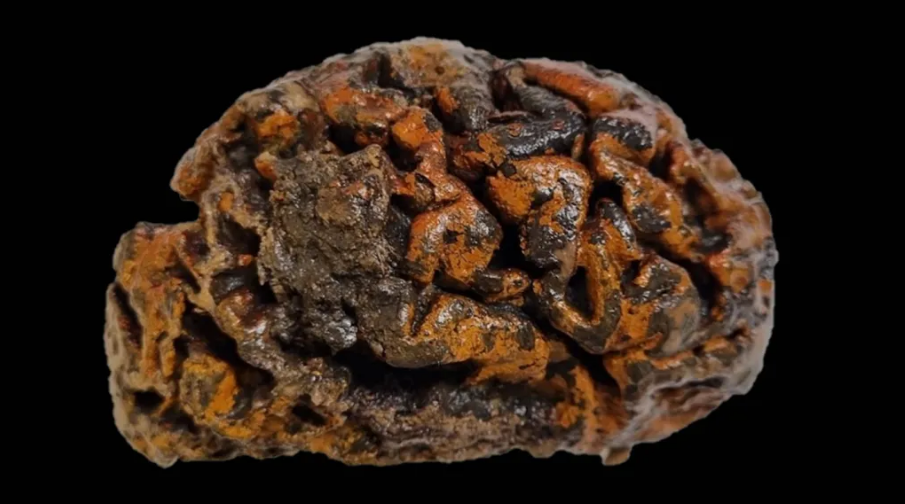Human brains found at archaeological sites are surprisingly well-preserved

Naturally preserved brains can take on a variety of textures and colors, depending on their surroundings. This 1,000-year-old brain of an individual excavated from a 10th century Belgian churchyard is still soft and wet and stained orange with iron oxides.
Early in her research, forensic anthropologist Alexandra Morton-Hayward came across a paper describing a 2,500-year-old brain preserved in a severed skull. The paper referenced another preserved brain. She found another. And another. By the time she’d reached 12, she noticed all of the papers described the brains as a unique phenomenon. She kept digging.
Naturally preserved brains, it turns out, aren’t so rare after all, Morton-Hayward, of the University of Oxford, and colleagues report March 20 in Proceedings of the Royal Society B. The researchers have built an archive of 4,400 human brains preserved in the archaeological record, some dating back nearly 12,000 years. The archive includes brains from North Pole explorers, Inca sacrificial victims and Spanish Civil War soldiers.
Because the brains have been described as exceptionally rare, little research has been done on them. “If they’re precious, one-of-a-kind materials, then you don’t want to analyze them or disturb them,” Morton-Hayward says. Less than 1 percent of the archive has been investigated.
Matching where the brains were found with historical climate patterns hints at what might keep the brains from decaying. Over a third of the samples persisted because of dehydration; others were frozen or tanned. Depending on the conditions, the brains’ texture could be anywhere from dry and brittle to squishy and tofulike.
About a quarter of the brains came from bodies without any other preserved soft tissue. No skin, kidneys or muscles, “just this shrunken perfect little brain rattling around in a skull,” Morton-Hayward says.
Why brains persist when other soft tissue degrades is unclear, but the answer could lie in the organ’s chemical makeup. The ratio of proteins to lipids within the brain is unique, at 1-to-1. Other soft tissues have more carbohydrates and very different ratios of proteins to lipids. This ratio might be important because when metals like iron enter the mix, they could prompt proteins and lipids to fuse together and endure.
The team is now using new tools to better understand the molecular interactions behind brain preservation.